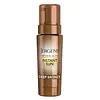What's inside
What's inside
 Key Ingredients
Key Ingredients

No key ingredients
 Benefits
Benefits

 Concerns
Concerns

 Ingredients Side-by-side
Ingredients Side-by-side

Water
Skin ConditioningHydroxyethyl Urea
HumectantGlycerin
HumectantDimethicone
EmollientJojoba Esters
EmollientPetrolatum
EmollientSelaginella Lepidophylla Extract
EmollientAloe Barbadensis Leaf Juice
Skin ConditioningStearyl Alcohol
EmollientBehentrimonium Methosulfate
Glyceryl Stearate
EmollientSteareth-21
CleansingCetyl Alcohol
EmollientButylene Glycol
HumectantStearamidopropyl Pg-Dimonium Chloride Phosphate
Propylene Glycol
HumectantCetearyl Alcohol
EmollientPolysorbate 60
EmulsifyingCitrullus Lanatus Fruit Extract
Skin ConditioningPyrus Malus Fruit Extract
Skin ConditioningLens Esculenta Fruit Extract
Skin ConditioningSodium Lactate
BufferingSodium PCA
HumectantDistearyldimonium Chloride
Methyl Gluceth-20
HumectantEthylhexylglycerin
Skin ConditioningMethylparaben
PreservativeTocopheryl Acetate
AntioxidantBisabolol
MaskingZingiber Officinale Root Extract
MaskingPanthenol
Skin ConditioningHydrolyzed Jojoba Esters
Skin ConditioningEDTA
Ubiquinone
AntioxidantC12-15 Alkyl Benzoate
AntimicrobialJojoba Oil/Macadamia Seed Oil Esters
Skin ConditioningSqualene
EmollientPhytosteryl Macadamiate
Skin ConditioningPhytosterols
Skin ConditioningTocopherol
AntioxidantPotassium Hydroxide
BufferingMagnesium Ascorbyl Phosphate
AntioxidantWhey Protein
Skin ConditioningWater, Hydroxyethyl Urea, Glycerin, Dimethicone, Jojoba Esters, Petrolatum, Selaginella Lepidophylla Extract, Aloe Barbadensis Leaf Juice, Stearyl Alcohol, Behentrimonium Methosulfate, Glyceryl Stearate, Steareth-21, Cetyl Alcohol, Butylene Glycol, Stearamidopropyl Pg-Dimonium Chloride Phosphate, Propylene Glycol, Cetearyl Alcohol, Polysorbate 60, Citrullus Lanatus Fruit Extract, Pyrus Malus Fruit Extract, Lens Esculenta Fruit Extract, Sodium Lactate, Sodium PCA, Distearyldimonium Chloride, Methyl Gluceth-20, Ethylhexylglycerin, Methylparaben, Tocopheryl Acetate, Bisabolol, Zingiber Officinale Root Extract, Panthenol, Hydrolyzed Jojoba Esters, EDTA, Ubiquinone, C12-15 Alkyl Benzoate, Jojoba Oil/Macadamia Seed Oil Esters, Squalene, Phytosteryl Macadamiate, Phytosterols, Tocopherol, Potassium Hydroxide, Magnesium Ascorbyl Phosphate, Whey Protein
Water
Skin ConditioningGlycerin
HumectantDihydroxyacetone
Skin ConditioningAlcohol Denat.
AntimicrobialDecyl Glucoside
CleansingCeteareth-25
CleansingMethylparaben
PreservativeParfum
MaskingHydroxyethyl Acrylate/Sodium Acryloyldimethyl Taurate Copolymer
Emulsion StabilisingCitric Acid
BufferingSorbitan Isostearate
EmulsifyingPolysorbate 60
EmulsifyingBenzyl Alcohol
PerfumingErythrulose
TanningCitrus Aurantium Dulcis Peel Oil
MaskingCI 60725
Cosmetic ColorantSolvent Yellow 33
CI 14700
Cosmetic ColorantWater, Glycerin, Dihydroxyacetone, Alcohol Denat., Decyl Glucoside, Ceteareth-25, Methylparaben, Parfum, Hydroxyethyl Acrylate/Sodium Acryloyldimethyl Taurate Copolymer, Citric Acid, Sorbitan Isostearate, Polysorbate 60, Benzyl Alcohol, Erythrulose, Citrus Aurantium Dulcis Peel Oil, CI 60725, Solvent Yellow 33, CI 14700
 Reviews
Reviews

Ingredients Explained
These ingredients are found in both products.
Ingredients higher up in an ingredient list are typically present in a larger amount.
Glycerin is already naturally found in your skin. It helps moisturize and protect your skin.
A study from 2016 found glycerin to be more effective as a humectant than AHAs and hyaluronic acid.
As a humectant, it helps the skin stay hydrated by pulling moisture to your skin. The low molecular weight of glycerin allows it to pull moisture into the deeper layers of your skin.
Hydrated skin improves your skin barrier; Your skin barrier helps protect against irritants and bacteria.
Glycerin has also been found to have antimicrobial and antiviral properties. Due to these properties, glycerin is often used in wound and burn treatments.
In cosmetics, glycerin is usually derived from plants such as soybean or palm. However, it can also be sourced from animals, such as tallow or animal fat.
This ingredient is organic, colorless, odorless, and non-toxic.
Glycerin is the name for this ingredient in American English. British English uses Glycerol/Glycerine.
Learn more about GlycerinMethylparaben is a preservative and is a paraben. It is used to prevent the growth of fungus, mold, and other harmful bacteria. Parabens are chemicals used as preservatives in both cosmetics and food.
Methylparaben can be synthetically created. It can also be found naturally in some fruits, such as blueberries.
Oftentimes, Methylparaben is combined with other parabens to help increase the shelf life.
The safety of Methylparaben is currently being studied. While ongoing studies are looking into the safety of parabens, the results have been very mixed. Some studies have not found Methylparaben to be harmful.
Learn more about MethylparabenPolysorbate 60 is used to help stabilize products. It is a surfactant and emulsifier. These properties help keep ingredients together in a product. Surfactants help reduce surface tension between ingredients with different states, such as liquids and solids. Emulsifiers help prevent oils and waters from separating.
Polysorbate 60 is sorbitol-based and created from the ethoxylation of sorbitan. Ethoxylation is a chemical reaction used to add ethylene oxide. Sorbitan is a the dehydrated version of sorbitol, a sugar found in fruits.
In this case, the 60 comes from reacting 60 units of ethylene oxide with sorbitan.
Polysorbates are commonly used in medicine and foods.
Learn more about Polysorbate 60Water. It's the most common cosmetic ingredient of all. You'll usually see it at the top of ingredient lists, meaning that it makes up the largest part of the product.
So why is it so popular? Water most often acts as a solvent - this means that it helps dissolve other ingredients into the formulation.
You'll also recognize water as that liquid we all need to stay alive. If you see this, drink a glass of water. Stay hydrated!
Learn more about Water